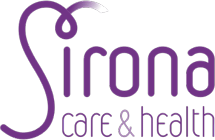North Bristol Trust has taken part in a pioneering trial offering hope for restoring brain cells damaged in Parkinson’s
North Bristol Trust has taken part in a pioneering trial programme by offering patients with Parkinson’s an experimental treatment directly to the brain to see if it is possible to restore the cells damaged by the disease.
- 27th February 2019
North Bristol Trust has taken part in a pioneering trial programme by offering patients with Parkinson’s an experimental treatment directly to the brain to see if it is possible to restore the cells damaged by the disease.
The multimillion-pound study, funded by Parkinson’s UK with support from The Cure Parkinson’s Trust and in association with the North Bristol NHS Trust, aimed to investigate whether boosting the levels of a naturally-occurring protein, Glial Cell Line Derived Neurotrophic Factor (GDNF), can regenerate dying brain cells in people with Parkinson’s and reverse their condition, which is something that no existing treatment can do.
To get GDNF to the brain cells that need it, a specially designed delivery system was developed. In total, 41 participants underwent robot-assisted surgery to have four tubes carefully placed into their brains, which allowed GDNF to be infused directly to the affected brain areas with pinpoint accuracy, via a port in the side of their head.
Six took part in the initial pilot study to assess the safety of the treatment approach and a further 35 people then participated in the nine-month double blind trial, where half were randomly assigned to receive monthly infusions of GDNF and the other half placebo infusions.
After the initial nine months on GDNF or placebo, all participants had the opportunity to receive GDNF for a further nine months.
While there were some encouraging signs of improvements in those receiving GDNF, disappointingly there was no significant difference between the active treatment group and those who received placebo on any assessments of Parkinson’s symptoms.
However, results from brain scans revealed extremely promising effects on damaged brain cells.
All participants had brain scans before starting the trial and after nine months to assess how well their dopamine-producing brain cells were working.
After nine months, there was no change in the scans of those who received placebo, whereas the group who received GDNF showed an improvement of 100% in a key area of the brain affected in the condition – offering hope that the treatment was starting to reawaken and restore damaged brain cells.
By 18 months, when all participants had received GDNF, both groups showed moderate to large improvements in symptoms compared to their scores before they started the study.
This offers further encouragement that the treatment may have long-term beneficial effects but because everyone knew they were receiving the active treatment and there was no comparison group, these improvements need to be treated with caution.
The findings from these ground-breaking trials are published today in Brain and the Journal of Parkinson’s Disease.
The trial also features in a two-part documentary series for BBC Two – The Parkinson’s Drug Trial: A Miracle Cure?
Dr Alan Whone, Principal Investigator on the GDNF trial and Director of the Parkinson’s and Other Movement Disorders Health Integration Team (MOVE HIT), said:
“The spatial and relative magnitude of the improvement in the brain scans is beyond anything seen previously in trials of surgically delivered growth-factor treatments for Parkinson’s.
“This represents some of the most compelling evidence yet that we may have a means to possibly reawaken and restore the dopamine brain cells that are gradually destroyed in Parkinson’s.
“Its failure to produce the same effect on symptoms could be for a number of reasons. It may be that the effects on symptoms lag behind the improvement in the brain scans, so a longer double-blind trial may have produced a clearer effect.“It’s also possible that a higher dose of GDNF would have been more effective, or that participants at an earlier stage of the condition would have responded better. This is why it’s essential to continue research exploring this treatment further – GDNF continues to hold potential to improve the lives of people with Parkinson’s.”
Trial participant Tom Phipps, 63, from Bristol, was the first person to undergo the pioneering surgery. He said:
“Clinical trials around Parkinson’s are so important because it’s a condition that’s not going to go away unless people do proper research. Being a scientist myself – I’m a graduate of biological sciences – I wanted to contribute.
“During the trial I noticed an improvement in my mobility and energy levels, and I was even able to reduce my medication. Since it ended, I have slowly increased my medication but I still ride my bike, dig my allotment and chair the local branch of Parkinson’s UK.
“My outcome was as positive as I could have wished for, I feel the trial brought me some time and has delayed the progress of my condition.
“The best part was absolutely being part of a group of people who’ve got a similar goal – not only the team of consultants and nurses, but also the participants.“You can’t have expectations – you can only have hope.”
Professor Steven Gill, lead neurosurgeon and designer of the device, commented:
“This trial has shown that we can safely and repeatedly infuse drugs directly into patient’s brains over months or years through a small implanted port that emerges through the skin behind the ear.
“This is a significant breakthrough in our ability to treat neurological conditions, such as Parkinson’s because most drugs that might work cannot cross from the blood stream into the brain due to a natural protective barrier.
“Even at a low dose we have seen evidence of patient improvement, which is incredibly encouraging. Now we need to move towards a definitive clinical trial using higher doses and this work urgently needs funding. I believe that this approach could be the first neuro-restorative treatment for people living with Parkinson’s which is, of course, an extremely exciting prospect.”






